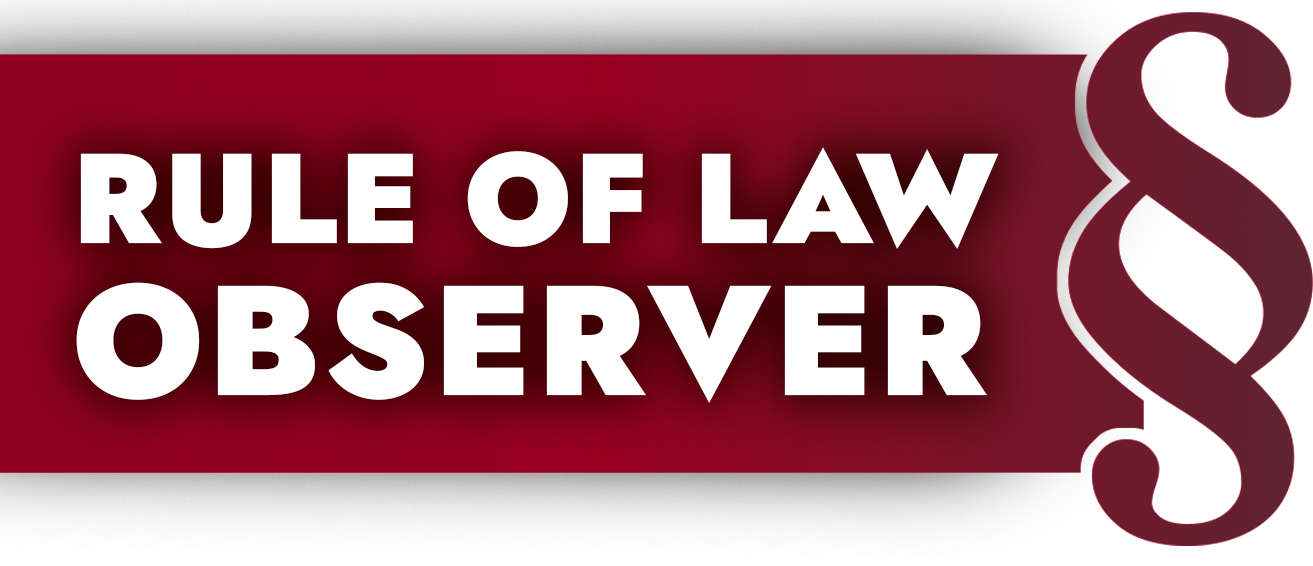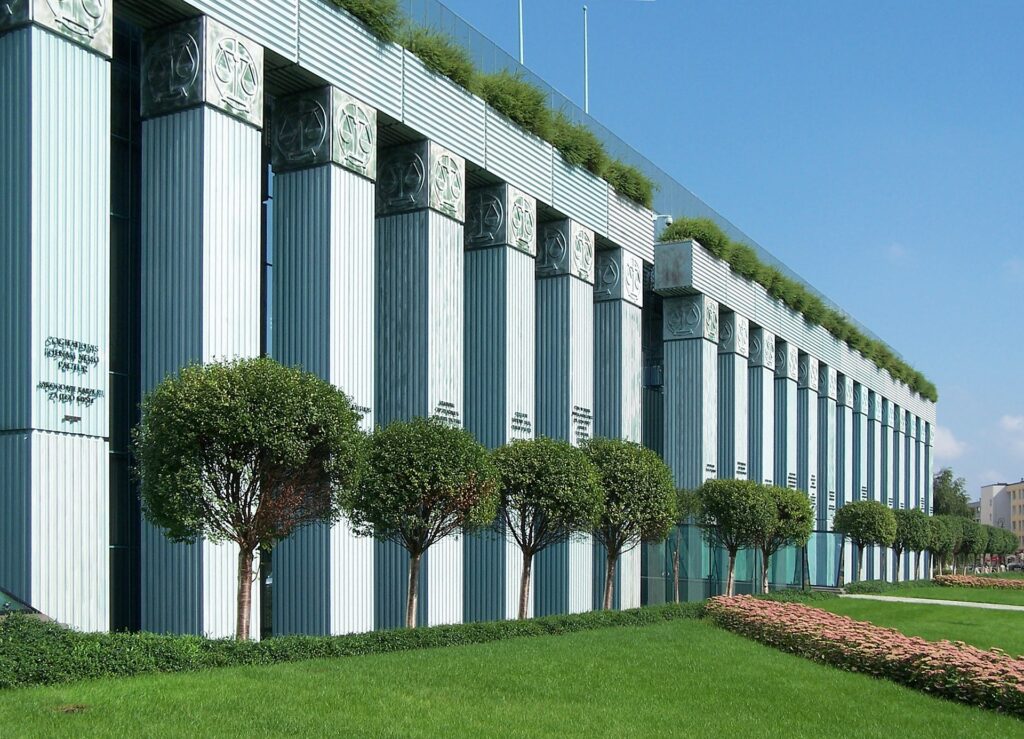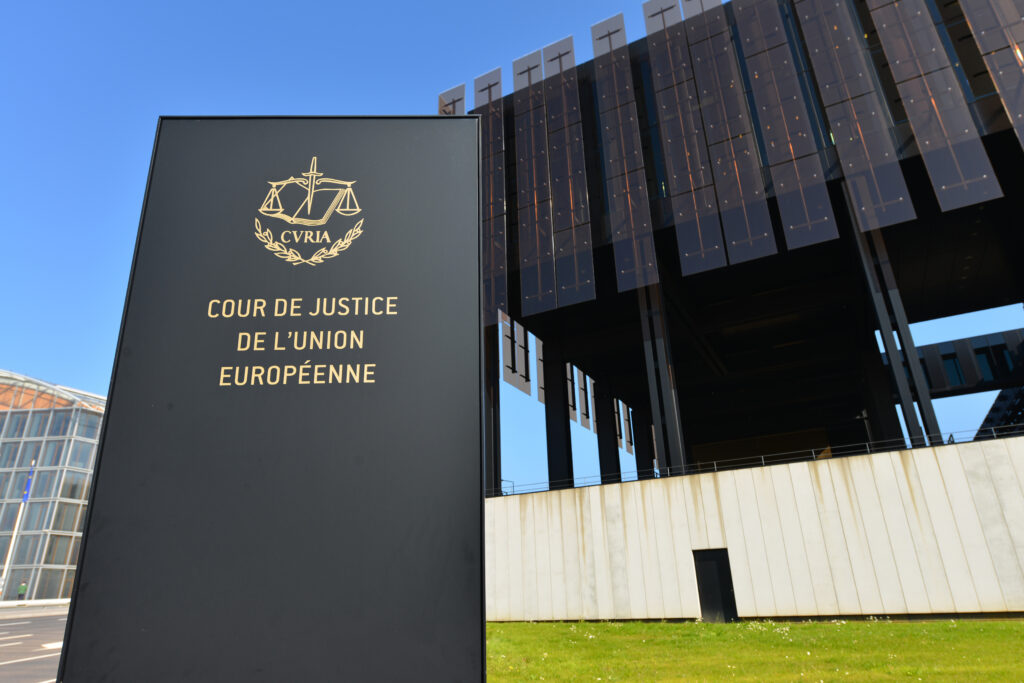- Polish law does not provide for a procedure for ‘recounting votes’, especially in all district electoral commissions.
- The official results announced by the National Electoral Commission can only be challenged through electoral protests, but these will only be considered by the Supreme Court if they contain specific allegations supported by adequate evidence.
- Previous precedents, established in particular during the 2014 local elections and the 1995 presidential elections, set the bar very high when it comes to challenging election results across the country.
There have been calls in the public sphere to recount the votes cast in the recent elections in all polling stations. The initiator of this proposal is Roman Giertych, who posted an election protest form online that anyone could download, fill out and send to the Supreme Court. This template included a request for the admission and examination of evidence from a recount of votes in all district electoral commissions throughout the country.
However, does the law provide for such a possibility?
Legal regulation of election protests in Poland
The legal provisions relevant to this case can be found in several places in the Electoral Code. First of all, Article 82 establishes general provisions on election protests applicable to all types of elections. They stipulate that:
An objection may be lodged against the validity of elections, the validity of elections in a constituency or the election of a specific person on the following grounds:
1) a criminal offence against elections, as defined in Chapter XXXI of the Criminal Code, which affects the conduct of voting, the determination of voting results or election results, or
2) a violation of the provisions of the Code concerning voting, the determination of voting results or election results, which affects the outcome of the elections.
Article 83 § 2 specifies that:
The rules for lodging protests and the procedure for their examination, as well as for ruling on the validity of elections, are laid down in specific provisions of the Code.
With regard to presidential elections, these specific provisions are Articles 321 et seq. of the Code. Paragraph 3 of this article lays down the requirements to be met by an electoral protest:
The person lodging the protest shall formulate the allegations and present or indicate the evidence on which the allegations are based.
If the protest does not meet these conditions, then, in accordance with Article 322 of the Code:
The Supreme Court shall dismiss a protest lodged by an unauthorised person or a protest that does not meet the conditions set out in Article 321. It is not permissible to restore the time limit for lodging a protest.
Pursuant to Article 323, the Supreme Court shall examine a protest that has not been rejected by a panel of three judges and then:
issue an opinion in the form of a decision on the protest. […] The opinion shall contain findings as to the validity of the allegations in the protest and, if the allegations are upheld, an assessment of whether the electoral offence or violation of the provisions of the Code had an impact on the outcome of the election.
In other words, the Supreme Court determines two issues – whether the protest is justified, and if so, whether the violation of the provisions contained therein had an impact on the election results. As part of this determination, the Supreme Court may, in accordance with Article 79 of the Code, order the opening and inspection of the collective package in which the votes cast in a given polling station were sealed and then handed over to the election official for safekeeping.
The above procedure is the only one that allows the election results announced in accordance with Article 318 of the Code in the PKW announcement to be challenged. In other words, no authority other than the Supreme Court may order a ‘recount’, and the Supreme Court cannot order this unless there is an election protest with a specific allegation based on adequate evidence (which was acknowledged by the Spokesman of the Supreme Court, Professor Aleksander Stępkowski).
Going further, the only remedy available to the Supreme Court if it finds that the violation referred to in the protest was justified and had an impact on the election results is to adopt a resolution declaring the election invalid pursuant to Article 324 of the Electoral Code, as a result of which the Marshal of the Sejm should order (pursuant to Article 325) new elections. However, since the Supreme Court decides on the validity of elections in a full chamber, while election protests were considered by three-member panels, it is not bound by decisions relating to individual protests when making such a decision.
Returning to Mr Giertych’s model, it should be pointed out that its content leaves much to be desired. In fact, the only objection, described in more detail in this model, is that a number of committees (31) registered for the elections but failed to collect the required number of signatures and thus register their candidates (some did not even attempt to do so, while others tried but failed) (some did not even try to do so, others tried but failed), but which nevertheless nominated members to work in the polling station committees. However, such action is directly in accordance with the law (Article 182 of the Electoral Code), and therefore challenging the election results on this basis alone must be considered inadmissible. It can therefore be expected that the Supreme Court will consider all protests submitted under Mr Giertych’s template together (in accordance with the announcement of the Court Spokesperson), and then decide to dismiss them due to failure to meet the statutory requirements. This scenario is considered most likely by Dr Michał Sopiński, rector of the Academy of Justice:
The Supreme Court, pursuant to Article 322 § 1 of the Electoral Code, will dismiss Giertych’s photocopies without further proceedings due to failure to meet the formal requirements for an election protest specified in Article 321 of the Electoral Code.
The actual scale of irregularities
The above does not mean, of course, that there were no irregularities in the publication of the results of the second round of the presidential election in individual electoral commissions. However, the scale of these irregularities was estimated by Internet users just a few days after the election.
Data analyst Jakub Kubajek, based on the results of the first round and the flows between the electorates of individual candidates examined in the Exit Poll, pointed to about twenty commissions where mistakes could have been made by entering the results into the protocol ‘backwards’ (votes cast for Karol Nawrocki were recorded as votes for Rafał Trzaskowski and vice versa).
Mistakes to the detriment of Rafał Trzaskowski were reported in the following committees:
- Kraków – committee no. 95;
- Strzelce Opolskie municipality – committee no. 9;
- Tychy – commission no. 35;
- Mińsk Mazowiecki – commission no. 13;
- Olesno municipality – commission no. 3;
- Grudziądz – commission no. 25;
- Gdańsk – commission no. 17;
- Brześć Kujawski municipality – commission no. 4;
- Bielsko-Biała – commission no. 30;
- Bielsko-Biała – commission no. 61;
- Kobyłka – commission no. 12.
On the other hand, the following commissions are said to have made mistakes to the detriment of Karol Nawrocki:
- Ostrów Mazowiecka – commission no. 7;
- Sępopol municipality – commission no. 4;
- Staszów municipality – commission no. 4;
- Bychawa municipality – commission no. 4;
- Łódź – commission no. 157;
- Magnuszew municipality – commission no. 1;
- Grybów – commission no. 3;
- Talatyn municipality – commission no. 2;
- Warsaw Mokotów – commission no. 113;
- Inowrocław municipality – commission no. 11.
The analyst estimated that after the actual results from these commissions were determined, Karol Nawrocki’s lead over Rafał Trzaskowski could fall by about two thousand votes. Therefore, given the lead of almost 400,000 votes won by the candidate supported by Law and Justice, these errors did not affect the outcome of the election.
By a decision of 11 June 2025, the Supreme Court admitted evidence from the inspection of ballot papers from:
- Precinct Election Commission No. 95 in Krakow,
- Precinct Election Commission No. 3 in Olesno,
- Precinct Commission No. 13 in Mińsk Mazowiecki,
- Precinct Election Commission No. 9 in Strzelce Opolskie,
- Precinct Election Commission No. 25 in Grudziądz,
- Precinct Election Commission No. 17 in Gdańsk,
- Precinct Election Commission No. 30 in Bielsko-Biała,
- Precinct Election Commission No. 61 in Bielsko-Biała
- District Electoral Commission No. 10 in Tarnów,
- District Electoral Commission No. 53 in Katowice,
- District Electoral Commission No. 35 in Tychy,
- District Electoral Commission No. 6 in Kamienna Góra,
- District Electoral Commission No. 4 in Brześć Kujawski;
– i.e. only in those Commissions where allegations were raised that mistakes had been made to the detriment of Rafał Trzaskowski.
Indeed, after examining the ballot papers, the court found (as reported by the Press Spokesperson for the Prosecutor General in two statements, the first referring to two commissions in Bielsko-Biała, the second to another 10), that in eight of them, votes cast for candidates had been switched (votes were entered “backwards”), in two (commission no. 6 in Kamienna Góra and one of the commissions in Bielsko-Biała), some of the votes cast for Rafał Trzaskowski were recorded as votes for Karol Nawrocki, while in the remaining two, either no irregularities were found (commission no. 10 in Tarnów) or irregularities were found that did not affect the difference in the results between the candidates (commission no. 53 in Katowice). With regard to the last commission (No. 35 in Tychy) – the only one for which no official statement was issued – according to media reports, its members also admitted to entering votes ‘backwards’.
However, what is particularly important is that these results almost perfectly match the calculations of the above-mentioned analyst, which he published on platform X shortly after the Supreme Court issued its decision.
At the same time, it should be emphasised that the Supreme Court did not decide to inspect the votes cast in any of the commissions where a mistake to the detriment of Karol Nawrocki:
This means that no election protests were lodged in relation to these committees (or at least they have not been considered so far), which may in turn be due to the fact that Karol Nawrocki’s voters, satisfied with the overall result, were less determined to correct minor errors. These mistakes, which are irrelevant from the point of view of the election result, after recounting the votes only from the committees where mistakes were made to the detriment of Rafał Trzaskowski, Karol Nawrocki’s lead melted by about 5,000 votes. Taking into account mistakes in the other direction, this number would probably decrease to around 2,500 votes. With, as mentioned above, a lead of almost 400,000 votes, these numbers are negligible.
Previous precedents
Errors in protocols are, of course, not a new phenomenon. The Supreme Court had to deal with exactly this situation when considering the presidential elections in 2010, when it issued the Decision of 27 July 2010 (file ref.: III SW 166/10).
In this ruling, the Supreme Court ordered the National Electoral Commission to correct the election results in the commission where the mistake occurred, while stating that it had no impact on the outcome of the election (won by Bronisław Komorowski).
It would be unprecedented for the Supreme Court to order a review of the votes cast in all commissions. It should be noted here that such a measure was not taken in 2014, when local elections were held – one of the most controversial in the history of the Third Republic of Poland. These elections were characterised, among other things, by a record percentage of invalid votes (especially in the regional council elections – almost 18%, compared to 12% in 2010 or only 7% in 2018), a record percentage of votes cast for the PSL (almost 24% in regional council elections nationwide, whereas never before or since has it exceeded 20%) and a significant difference, clearly exceeding the statistical margin of error, between the results of the exit polls and the official results (primarily to the advantage of the PSL and to the disadvantage of PiS). Following those elections, almost all members of the National Electoral Commission and the Head of the National Electoral Office resigned.
Of course, local elections are different from presidential elections. In particular, according to Article 394 of the Electoral Code, electoral protests lodged in connection with them are examined by the competent district court, not the Supreme Court. Nevertheless, there was no recount of votes not only in the whole country, but not even in any entire province. Only in a few dozen places where irregularities in the electoral rolls or defects in the ballot papers (on which some candidates were missing) were detected, the courts, after examining the election protests, decided to repeat the elections to city/municipal councils or for mayor/commune head – and this was also more often the case in some constituencies than in entire municipalities.
Referring to previous precedents related to ruling on the validity of elections, especially presidential elections, it is impossible not to mention the 1995 elections, when Lech Wałęsa was defeated in the second round by the post-communist candidate Aleksander Kwaśniewski. At that time, a record number of almost half a million election protests were lodged, the vast majority of which referred to one and the same issue: Aleksander Kwaśniewski misleading the public about his higher education.
The Supreme Court then adopted a resolutionin which it stated that this issue could have influenced the outcome of the election, but since this influence could not be determined in a ‘measurable and verifiable’ manner, the election should be considered valid. It must therefore be concluded that, as a consequence of that resolution, the bar for the Supreme Court to declare the presidential elections in Poland invalid has been set very high.
Summary
In light of the above findings, it must be concluded that there are no factual or legal grounds for a ‘recount’ of votes in all commissions, let alone for invalidating the elections and holding them again. Moreover, such a recount would have to take place in violation of the guarantees provided by Polish law for electoral processes. The Polish electoral system is decentralised by nature – as already indicated above, members of electoral commissions are elected from among candidates nominated by electoral committees, who, in a sense, keep an eye on each other. The work of the commissions can be monitored at virtually every stage by scrutineers representing individual candidates or social observers (Articles 103b and 103c of the Electoral Code). Although the inspection is carried out by a court (in practice, the Supreme Court orders the competent district court to carry out such evidence as part of a request for judicial assistance), but in the presence of a politicised public prosecutor’s office, it does not allow for the above guarantees to be implemented and should therefore only be used in exceptional, justified circumstances. It may also be impossible to prove that there has been no tampering with the sealed collective packaging from the moment it was handed over to the commission for safekeeping until it was inspected by the court.
Protests submitted in accordance with Roman Giertych’s template should be dismissed as not meeting the statutory criteria. At the same time, it is regrettable that the unfounded narrative of the Honourable Member, which also calls for extra-legal action, is being repeated by government representatives, led by the Prime Minister:
On the other hand, however, knowing the practice of this government, which consists in taking a series of actions without legal basis, the above statement by Prime Minister Donald Tusk should, unfortunately, come as no surprise.
Image source: Adobe Stock.



